The Sony a1 was announced in January 2021 and took over the title of Sony’s flagship camera from the Sony a9II, it’s also Sony’s most expensive Alpha camera to-date.
With a 50.1 megapixel stacked sensor and 8k video, the Sony a1 was designed to do it all and without compromise.
The Sony a7RV was announced in October 2022 and features the highest megapixel sensor of the two cameras at 61 megapixels.
Although the 50.1 megapixel stacked sensor of the a1 might come up short on the megapixel count, it more than makes up for this with its super-fast stacked sensor.
In this article we’ll be taking a much closer look at the key differences between the flagship Sony a1 and the high megapixel Sony a7RV.
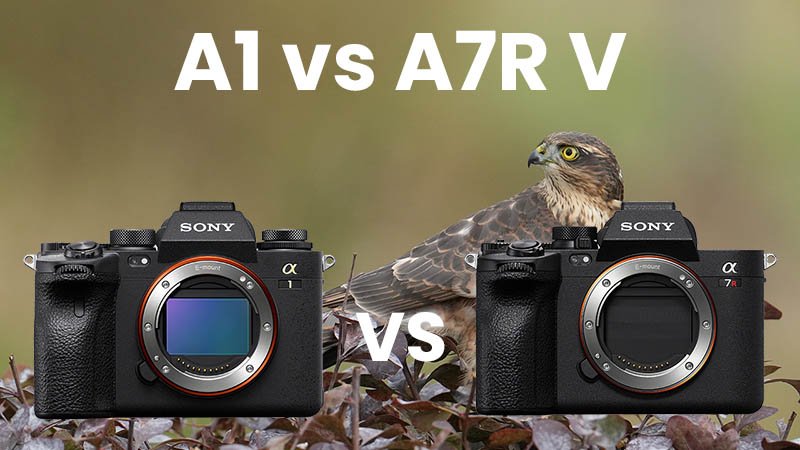
Sony A7R V Forum & Facebook Group
If you are looking for further help and advice on the A7R V or would simply like to share your photos and videos, then please head over to our friendly full-frame Forum. If you prefer Facebook then we also run the Sony A7R V + A7R IV Shooters Group.
Sony A1 Forum & Facebook Group
If you are looking for further help and advice on the a1 or would simply like to share your photos and videos, then please head over to our friendly full-frame Forum. If you prefer Facebook then I also run the Sony A1 Shooters Group.
Table of Contents[Hide][Show]
First let’s take a quick look at the key features that they do share in common:
- 10 FPS max with mechanical shutter (a1 shoots 30 FPS with electronic shutter)
- ISO 100-32000, Expanded ISO 50 to ISO 102400 for stills
- 3:2, 16:9, 4:3 and 1:1 image aspect ratios
- Two Memory Card Slots. CFexpress Type-A and UHS II/I SD cards are supported in both slots (not at the same time).
- Anti-Flicker and Variable Shutter for artificial lighting flicker suppression
- Multi Interface Shoe with digital audio
- Sony NP-FZ100 battery
Key Spec Comparison
Now let’s take a quick look at how the key specifications for each camera compare before digging deeper into the details.
| Specifications | Sony A1 | Sony A7R V |
|---|---|---|
| Sensor: | 50.1 MP 35 mm full-frame stacked back illuminated Exmor RS CMOS sensor | 61.0 MP 35mm full-frame back-illuminated Exmor R CMOS sensor |
| Processor: | BIONZ XR | BIONZ XR |
| Video: | 8k/30p 4k/120p (1.1x crop) 10-bit internal, 16-bit RAW external | 8K/24p (1.24x crop) 10-bit internal, 16-bit RAW external |
| ISO Sensitivity Stills: | ISO 100-32000, Expanded ISO 50 to ISO 102400 | ISO 100-32000, Expanded ISO 50 to ISO 102400 |
| ISO Sensitivity Movies: | ISO 100-32000, Expanded ISO 50 to ISO 102400 | ISO 100-32000 |
| Still Image Formats: | Lossless RAW, compressed RAW, uncompressed, RAW, HEIF, JPEG | Lossless RAW, compressed RAW, uncompressed, RAW, HEIF, JPEG |
| Continuous Shooting Electronic Shutter: | 30 FPS | 8 FPS |
| Continuous Shooting Mechanical Shutter: | 10 FPS | 10 FPS |
| Autofocus Points: | 759 phase detection points | 693 phase detection points |
| Autofocus Subject Detection: | Humans, Animals, Birds | Humans, Animals, Birds, Insects, Cars & Trains, and Aircraft |
| Stabilization: | 5-axis (5.5-stops) | 5-axis (8-stops) |
| EVF: | 9.44 million dots | 9.44 million dots |
| LCD: | 1.4 million dots | 2,095,104 million dots |
| LCD Type: | Tilt | Fully articulating with tilt |
| Image Buffer: | JPEG Extra fine L: 182 frames, JPEG Fine L: 400 frames, JPEG Standard L: 400 frames, RAW: 238 frames, RAW & JPG: 192 frames, RAW (Lossless Compression): 96 frames, RAW (Lossless Compression) & JPG: 83 frames, RAW (Uncompressed): 82 frames, RAW (Uncompressed) & JPG: 78 frames | JPEG Extra fine L: over 1000 frames, JPEG Fine L: over 1000 frames, JPEG Standard L: over 1000 frames, RAW: 583 frames, RAW & JPEG: 184 frames, RAW (Lossless Compressed): 547 frames, RAW (Lossless Compressed) & JPEG: 159 frames, RAW (Uncompressed): 135 frames, RAW (Uncompressed) & JPEG: 88 frames |
| Electronic Shutter: | 1/32000 to 30 sec | 1/8000 to 30 sec |
| Mechanical Shutter: | 1/8000 to 30 sec | 1/8000 to 30 sec |
| Flash Sync Speed Electronic Shutter: | 1/200 sec (1/250 sec APS-C) | – |
| Flash Sync Speed Mechanical Shutter: | 1/400 sec (1/500 sec APS-C) | 1/250 sec |
| Memory Card Slots: | Two Dual Slots. CFexpress Type-A and UHS II/I SD cards are supported in both slots. | Two Dual Slots. CFexpress Type-A and UHS II/I SD cards are supported in both slots. |
| Focus Bracketing: | No | Yes |
| Wireless LAN (Built-In): | IEEE 802.11 a/b/g/n/ac [2.4-GHz band /5-GHz band]) | IEEE 802.11a/b/g/n/ac (2.4GHz band/5GHz band) + 2×2 MIMO |
| USB: | SuperSpeed USB 10-Gbps (USB 3.2) Type-C connector | SuperSpeed USB 10-Gbps (USB 3.2) Type-C connector |
| Dimensions (W X H X D): | Approx. 128.9 mm x 96.9 mm x 80.8 mm | Approx. 131.3mm x 96.9mm x 82.4mm |
| Weight: | 737 g (1 lb 10.0 oz) | 723 g (1 lb 9.6 oz) |
| Battery Life Stills: | Approx. 430 shots (Viewfinder) / approx. 530 shots (LCD monitor) (CIPA standard) | Approx. 440 shots (Viewfinder) / approx. 530 shots (LCD monitor) (CIPA standard) |
| Battery Life Video: | Actual: Approx. 90 min. (Viewfinder) / Approx. 95 min. (LCD monitor) (CIPA standard). Continuous: Approx. 145 min. (Viewfinder) / Approx. 150 min. (LCD monitor) (CIPA standard). | Actual: Approx. 90 min (Viewfinder) / Approx. 100 min (LCD monitor) (CIPA standard). Continuous: Approx. 145 min (Viewfinder) / Approx. 150 min (LCD monitor) (CIPA standard). |
| Price (MRRP): | $6,498.00 / £6,499.00 | $3,898.00 / £3,999.00 |
Sensor and Processor
The Sony a1 features a 50.1 MP 35mm full-frame stacked back illuminated Exmor RS CMOS sensor, whereas the a7R V packs a 61.0 MP 35mm full-frame back-illuminated Exmor R CMOS sensor.
The below image shows the design of the a1’s stacked sensor.

Thanks to its stacked sensor and BIONZ XR processor the a1 is able to shoot at up to 30 frames per second with zero viewfinder blackouts using its electronic shutter. A much faster sensor readout also minimizes still-image distortion when using the electronic shutter.
The a7R V on the other hand is limited to 10 frames per second using its mechanical shutter and that’s with blackouts. Also if you choose to use the electronic shutter for moving subjects then you are likely to see some distortion in your images due to the rolling shutter, so for moving subjects you’ll want to stick with the mechanical shutter.
Both cameras feature the BIONZ XR image processing engine which is around 8x faster than the previous BIONZ X engine found in cameras like the Sony a7R IV. There may have been some tweaks between the BIONZ XR in the a1 and the latest XR in the a7R V, but Sony has not provided further clarification here.

However, the a7R V does include a brand new AI processing unit that is specifically dedicated to processing significant amounts of data to enable more accurate recognition of subjects and a wider range of subject types which include: insects, cars, trains and airplanes.
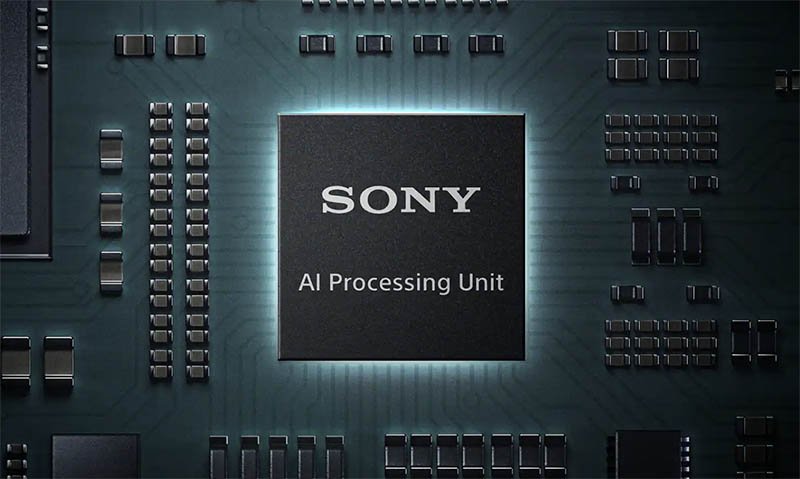
The flagship a1 does not feature this AI processing unit which limits its subject detection to people, animals and birds.
Both cameras share an identical ISO range of 100-32000, and expanded ISO 50 to ISO 102400 for stills and ISO 100-32000 for movies.
Still Image Recording Formats
Both cameras support JPEG/HEIF file formats, uncompressed RAW and compressed RAW.
The a7R V also supports the lossless RAW format with three selectable pixel counts – L (60M), M (26M), and S (15M).
The Sony a1 with firmware version 1.30 also gains the lossless RAW format: L (50M), M (21M), and S (12M).

APS-C / Super 35 Mode
The larger 61.0 MP sensor in the a7R V means that when you switch into APS-C / Super 35 Mode you’ll still be shooting a 26.2 MP image. This compares with the slightly smaller 21MP on the Sony a1.
You can setup a customizable button to quickly switch between full-frame and APS-C modes allowing you to instantly “zoom in” on your subject.
In-body Optical Stabilization
Both cameras feature 5-axis in-body image stabilization (IBIS). However where the Sony a1 offers 5.5 steps of correction, the a7R V improves this to 8 steps.
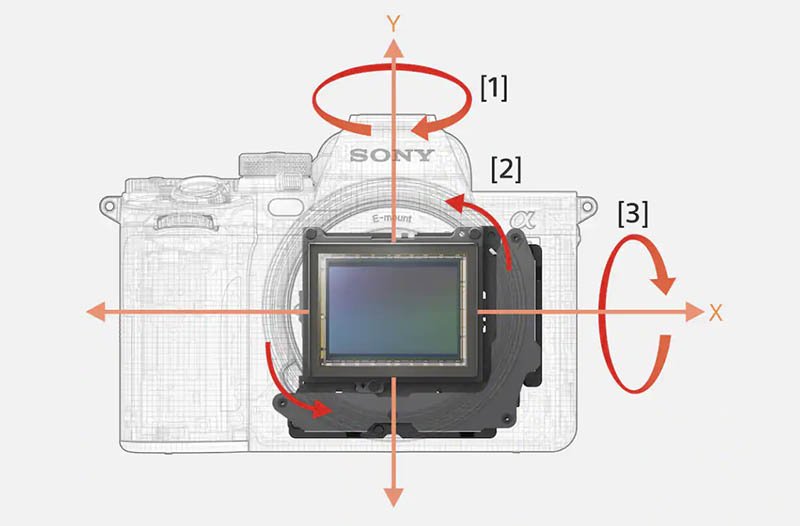
The a7R V also features a new stabilization algorithm that provides precise detection and control right down to the single-pixel level.
Shutter (Electronic & Mechanical)
Both cameras feature an electronic and mechanical shutter. The mechanical shutter supports a maximum of 10 FPS in both cameras, whereas the electronic shutter supports a maximum of 30 FPS in the a1 and 10 FPS in the a7R V.
The electronic shutter of the a1 is capable of shooting as fast as 1/32000 sec, while the a7RV supports a maximum shutter speed of 1/8000 sec.
Both cameras also have the option to close the shutter when the cameras is powered off to help keep the sensor clean when changing lenses.
The a7R V also gains an ultrasonic actuator that causes the filter in front of the sensor to oscillate at more than 70,000 cycles per second, effectively removing dust and particles from the filter surface.

Flash Support & Sync Speed
Both cameras have a flash sync terminal but this is only supported when using the mechanical shutter.
The Sony a1 supports a flash sync speed as high as 1/200s with the electronic shutter and in APS-C/Super 35 mode this increases to 1/250s. Using the mechanical shutter this increases to 1/400s when shooting full-frame and 1/500s in APS-C mode.
The a7R V supports a maximum flash sync speed of 1/250s (35 mm full frame) and 1/320s (APS-C) but only with the mechanical shutter, unlike the a1 there is no flash support when using the electronic shutter.
Bulb Timer
The a7R IV gains a bulb timer that allows you to set a timer between 2 and 900 seconds to automatically stop the exposure, although the a1 does have a bulb mode it does not feature a bulb timer.
Note that both cameras only support bulb mode when shooting with the mechanical shutter, it’s disabled when using the electronic shutter.
Drive Speed and Buffer
Both cameras support a maximum drive speed of 10 FPS using their mechanical shutters.
The flagship a1 trumps this by letting you shoot at up to 30 FPS using the electronic shutter, but only if you use a lens that supports 30 FPS and also only when shooting compressed RAW, JPEG or HEIF.
The a7RV is limited to 8 FPS when shooting with its electronic shutter in compressed RAW or JPEG/HEIF file types, for uncompressed RAW or Lossless Compressed this drops to only 5 FPS.
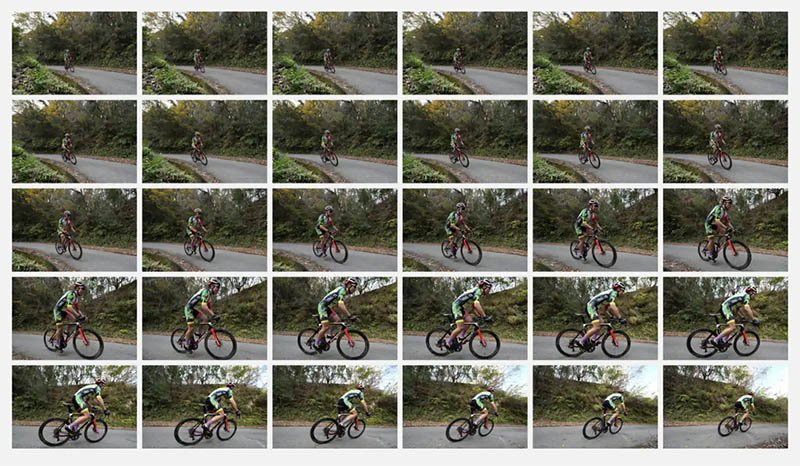
When it comes to the buffer the a1 will let you shoot around 157 compressed RAW files or 135 Extra Fine JPEGs before hitting the buffer when using a CFexpress Type-A card. You can view my complete in-camera buffer test results in my Sony A1 Memory Card Guide.
The a7R V however gains a much larger buffer size and can shoot around 583 compressed RAW images or over 1000 Extra fine JPEG images before hitting the buffer, but only when using a CFexpress Type-A memory card. This is really very impressive for a 61 megapixel camera!
My Sony A7R V Memory Card Guide will soon be updated with actual in-camera tests once the a7R V lands in my hands.
Autofocus
Both cameras feature Sony’s highly regarded autofocus system but with the a7R V being the newest camera it does have some extra tricks up its sleeve.
Both cameras feature a Focus Priority mode that provides more reliable AF in low light or when using smaller apertures along with accurate AF in low EV -4.0 light.
AI-based Real-time Eye AF and Real-time Tracking
The Sony a1 features real-time Eye AF and tracking, however the a7R V takes things further with its new AI processing that uses detailed information about human forms and postures to dramatically improve the camera’s subject recognition accuracy.
The Sony a1 can recognize people, animals and birds as can the a7R V. However, the a7R V also adds vehicles (cars, trains, airplanes) and insects.
The a7R V is also able to recognize heads and bodies in addition to eyes for humans, animals, and birds. It’s also able to detect the eyes of animals and birds when shooting movies, whereas the a1 can only detect and track human faces and eyes in movie mode.
The following table shows a quick comparison of the AF tracking features between the two cameras.
| A7R V Stills | A7R V Movie | A1 Stills | A1 Movie | |
|---|---|---|---|---|
| Human | Yes Face & Eye + Human Pose Estimation | Yes Face & Eye + Human Pose Estimation | Yes Face & Eye | Yes Face & Eye |
| Animal | Yes Eyes, Head & Body | Yes Eyes, Head & Body | Yes Eye | – |
| Bird | Yes Eyes, Head & Body | Yes Eyes, Head & Body | Yes Eye | – |
| Insect | Yes | Yes | – | – |
| Car / Train | Yes | Yes | – | – |
| Airplane | Yes | Yes | – | – |
Phase Detection Area and Points
The Sony a1 features 759 phase-detection AF points in both full-frame and APS-C mode when using full-frame lenses, this covers approximately 92% of the image area. With APS-C lenses in APS-C mode this is reduced to 575 phase-detection points.

The a7R V features up to 693 phase-detection points that cover approximately 79% of the image area. With an APS-C lens in APS-C mode this reduces to 567 points.
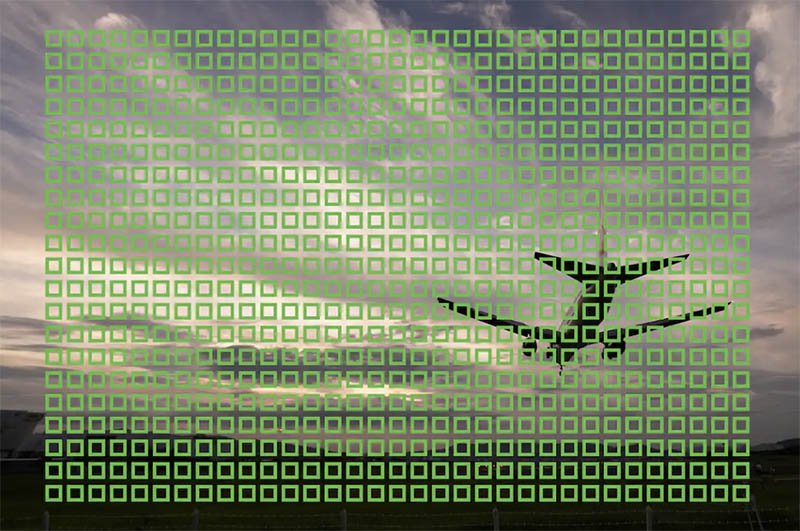
Full-time DMF
When shooting stills with AF-C or AF-S autofocus the lens’s focus ring can be rotated to switch to manual focus mode at any time.
The Sony a1 does not have the option to select Full-time DMF in-camera, however newer lenses like the Sony FE 70-200 F2.8 GM II have a switch that enables Full-time DMF on the lens body.
The a7R V allows you to select Full-time DMF in-camera through the menu system, however it’s not supported with the SELP1650, SEL18200LE or A-mount lenses.
Focus Bracketing
The a7R V is the first Sony camera to have a focus bracketing function built-in.
It’s selected as a Drive mode and you can select the ‘step-width’ between the different focus distances and the number of shots it takes (up to 299).
Unfortunately if you wish to stack and combine a set of focus bracketed images, you’ll need to use Imaging Edge Desktop.
The Sony a1 does not have any support for focus bracketing at this time, although we could potentially see it added via a firmware update in the future.
Video
Although the Sony a7R V is a much better video camera than its predecessor the a7R IV, it can’t quite match the Sony a1 in this department.
Here’s a comparison of the key video specs of each camera:
| A1 | A7R V | |
|---|---|---|
| File Format | XAVC HS 8K / XAVC HS 4K XAVC S 4K / XAVC S HD XAVC S-I 4K / XAVC SI HD | XAVC HS 8K / XAVC HS 4K XAVC S 4K / XAVC S HD XAVC S-I 4K / XAVC SI HD |
| Frame Rate | 8K30p (FF) / 4K/120p (FF) / 4K60p (FF) 4K30p/24p (FF) 4K30p/24p (S35) | 8K24p (FF) / 4K/60p (FF) 4K30p/24p (FF) 4K30p/24p (S35) |
| Color Sampling / Bit Depth (up to) | 4.2.2 / 10-bit internal, 16-bit RAW external | 4.2.2 / 10-bit internal, 16-bit RAW external |
| Creative XXX | Creative Look | Creative Look |
| Picture Profile | S-Log3 / S-Cinetone | S-Log3 / S-Cinetone |
| Flexible Exposure Mode | Yes | Yes |
| Audio | 48kHz/24bit 4ch Digital Audio Interface | 48kHz/24bit 4ch Digital Audio Interface |
| Image Stabilization | Active Mode | Active Mode+ |
| AF Assist | No | Yes |
| Focus Map | No | Yes |
| Breathing Compensation | No | Yes with Catalyst |
| AF Drive Speed / Transition Speed | 1 to 7 | 1 to 7 |
| AF Tracking Sensitivity / AF Subject Shift Sensitivity | 1 to 5 | 1 to 5 |
| Self-Timer | No | Yes |
The Sony a1 can shoot 8K/30p 10-bit 4:2:0 XAVC HS video with 8.6K oversampling. It can also shoot 4K/120p 10-bit 4:2:2 and Full HD at 240fps movies. 16-bit RAW output is supported over HDMI.
The a7RV can shoot 8K/24p and 4K/60p with a 1.2x crop in 10bit 4:2:2. It also offers 4K/30/25/24p and 1080/120p recording with no crop. 16-bit RAW output is also supported over HDMI.
Both cameras support S-Log, HLG and S-Cinetone profiles. The a7R V also supports AF assist, breathing compensation and focus map which sadly the a1 does not support at present. If we are lucky we may see these features added to the a1 via a future firmware update.
Active Mode Stabilization
Both cameras support Active Mode electronic stabilization. A slight image crop is applied in Active Mode and it’s not available when recording XAVC HS 8K or using a frame rate of at 120 (100) fps or higher.
The a7R V sees some improvements here as in addition to in-body stabilization, compatible lenses with their own built-in image stabilization are able to coordinate with the camera body for highly effective control. The following lenses have so far received a firmware update to support this feature:
- Sony FE 24-105mm F4 G OSS (Ver.02) – Download Firmware
- Sony FE 200-600mm F5.6-6.3 G OSS (Ver.02) – Download Firmware
- Sony FE 70-200mm F2.8 GM OSS II (Ver.02) – Download Firmware
- Sony FE 100-400mm F4.5-5.6 GM OSS (Ver.03) – Download Firmware
Here’s an example video showing Active Steadyshot in action with the Sony a1:
The a7R V also records the camera’s gyro data as you are shooting, allowing digital correction to be applied to footage (including 8K capture) using Sony’s Catalyst software.
Rolling Shutter
Due to its stacked sensor the readout rates of the a1 when shooting video are very fast, so there’s almost no rolling shutter to speak of regardless of which video mode you are using.
Sadly the same can’t be said for the a7RV as according to DPReview there’s significant rolling shutter in 8K mode and in the oversampled APS-C 4K modes. It’s a little better in the camera’s full-width 4K modes but it’s only really in the cropped 4K/60p setting that its well-controlled.
Heat-Dissipation
Both cameras make use of heat-dissipation technology and a body design that allows them to record up to 30 minutes of 8K when the Auto Power OFF Temp is set to High.
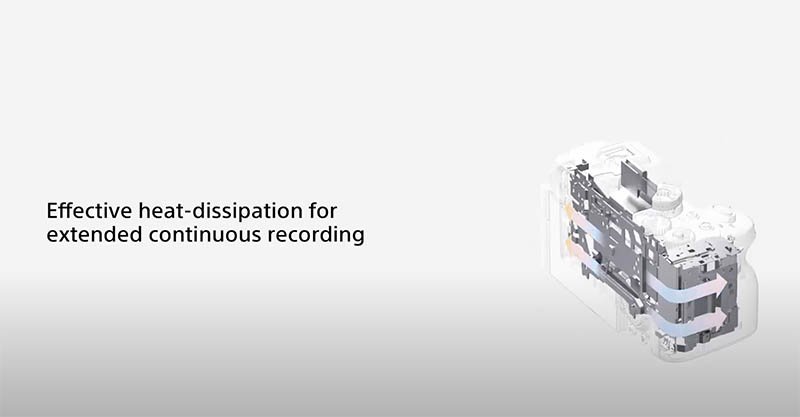
Jerald Undone has tested the movie recording of the a7R V in his review and achieved the following record times before the battery died and with Auto Power OFF Temp set to High:
- 8K24 = 1h34 (camera very hot to touch)
- 4K60 = 2h25 (camera warm)
- APC-C = 2h10 (camera hot)
- 4K Full-Frame = 2h33 (camera barely warm)
Camera Body & Controls
In terms of size and weight there is very little difference between these two cameras, here’s how they stack up to each other.
- A1: 128.9mm x 96.9mm x 80.8mm 737 g (1 lb 10.0 oz)
- A7R V: 131.3mm x 96.9mm x 82.4mm 723 g (1 lb 9.6 oz)
Sony A1
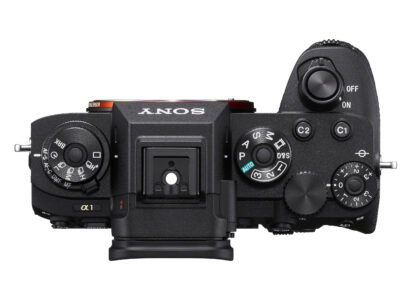

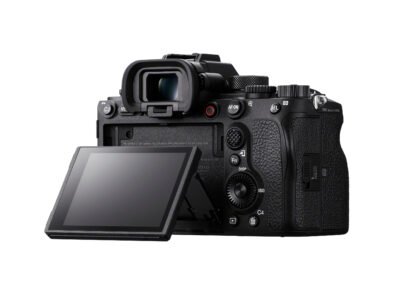
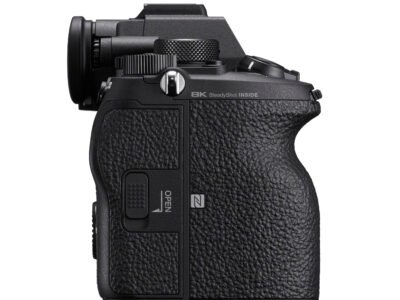
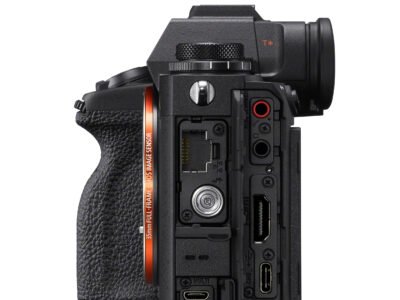
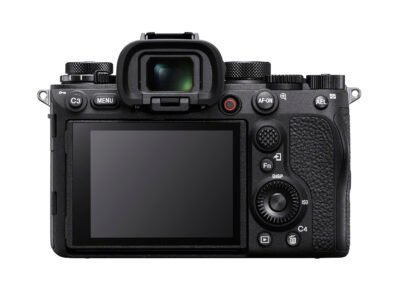
Sony A7R V

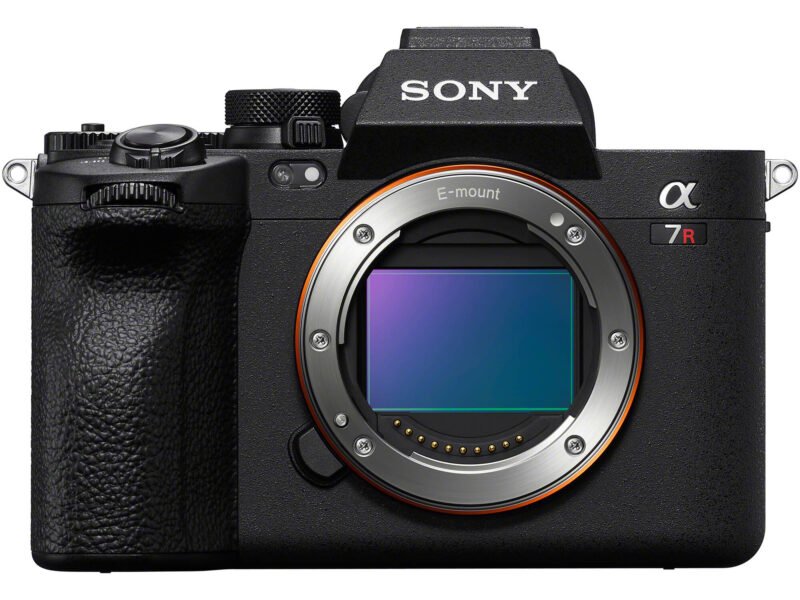
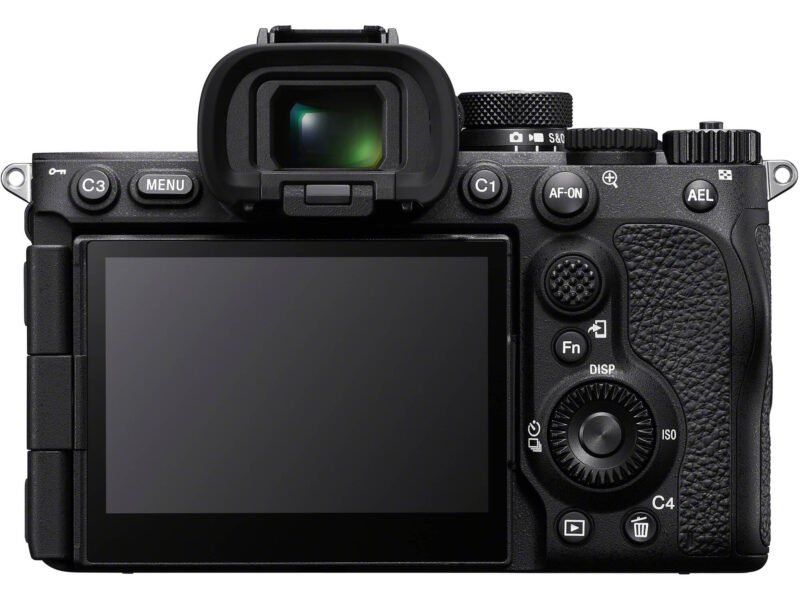
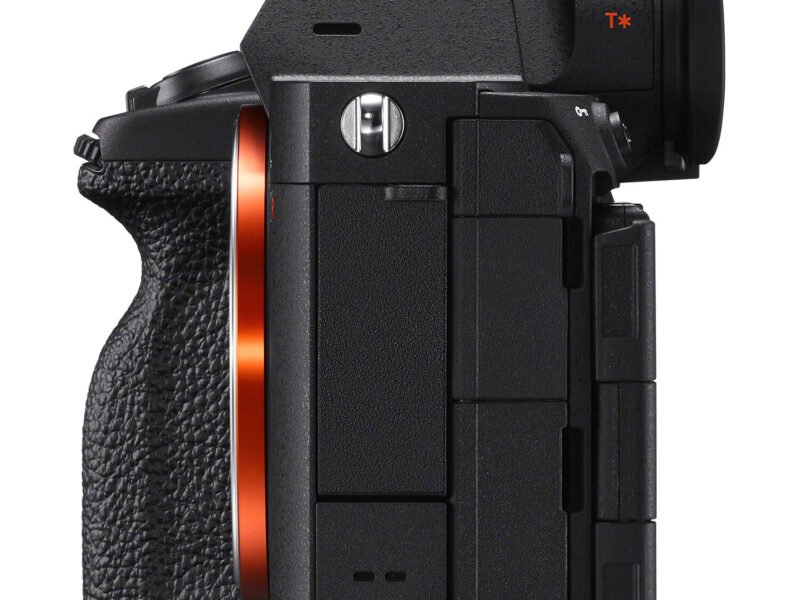
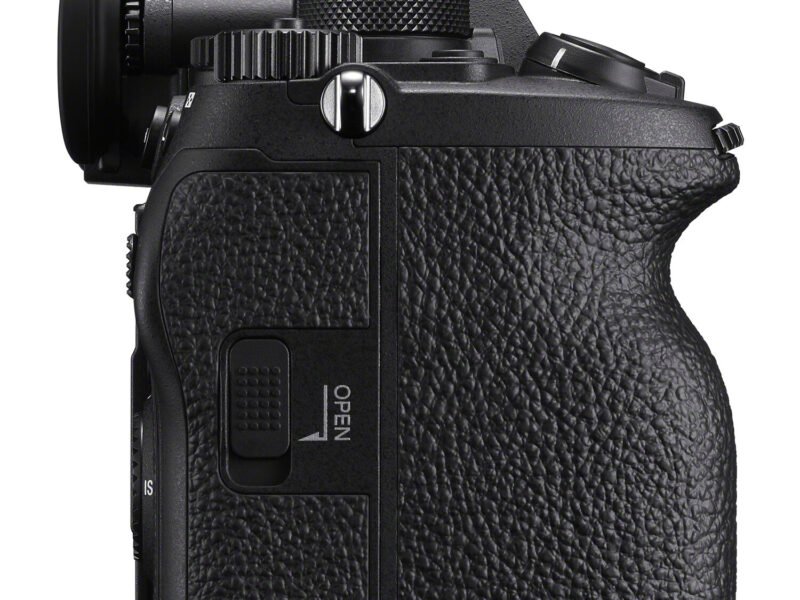
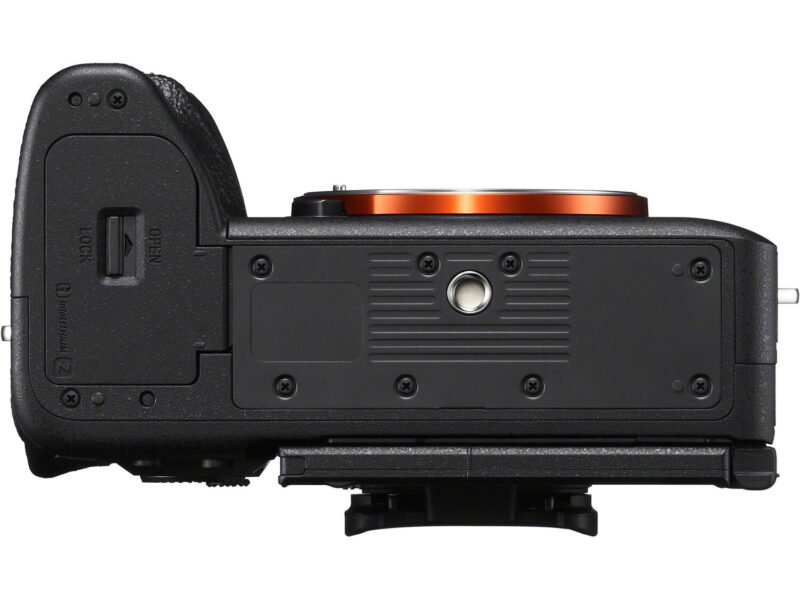
The bodies look very similar if you just take a quick glance, but look a little closer and you might spot the following differences:
- The [REC] button is placed just below and to the right of the EVF on the a1, whereas on the a7RV it sits on top of the camera, just behind the shutter button where the C1 button is on the a1. The C1 button on the a7RV is placed where the [REC] button is on the a1.
- The mode dial features an additional dial on the a7R V that lets you switch between stills, movies and S&Q mode.
- The exposure compensation dial is unmarked on the a7RV rather than displaying the +-3EV values as on the a1, this can now be customized in-camera.
- The a7RV doesn’t have the dedicated drive/focus mode dials on the left hand side of the top panel like you’ll find on the a1.
Both cameras feature a full-size HDMI port, flash sync terminal, microphone and headphone ports, a micro USB port and multi port.
There’s also a Multi Interface Shoe with digital audio connector that allows you to power and connect accessories such as microphones and flashes without the need for cables and batteries.
They also both use the Sony NP-FZ100 battery. In the a1 this will give you around 430 shots when using the viewfinder, or 530 shots with the LCD monitor. The a7RV is very similar at around 440 shots with the viewfinder or 530 shots with the LCD monitor.
Electronic Viewfinder and LCD Display
Both cameras feature a 9.44 million dot electronic viewfinder with 0.90x magnification. However, you will need to select the ‘Display Quality: High’ option in order to get the LCD’s full resolution when shooting.
Both cameras also allow you to select a viewfinder frame rate of 60fps or 120fps, however the a1 also gains a 240fps option allowing an even smoother display of fast moving subjects .
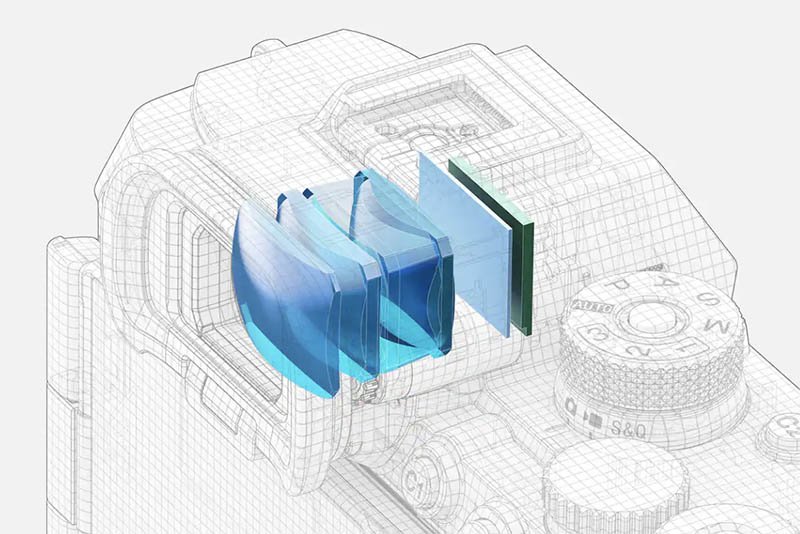
The a7R V gains a new fully articulating LCD with tilt (opening angles (approx.): Up 98°, down 40°, side 180°, rotation 270°).
The a1 is restricted to tilting upwards and downwards only (up by approx. 107 degrees, down by approx. 41 degrees).
The LCD of the a1 measures 3″ and features 1,440,000 dots. The a7R V’s LCD is slightly larger at 3.2″ and also has a higher resolution at 2,095,104 dots.
Menu
Both cameras feature Sony’s new and much improved menu system where options are arranged as vertical tabs with sub-categories that expand to show sub-menus.
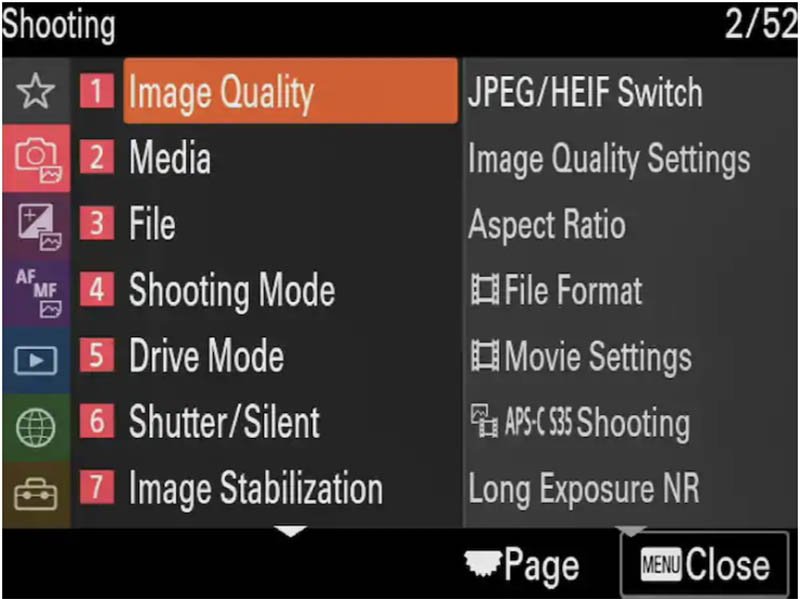
The Fn menu in each camera can also be customized and separately configured for stills and video shooting.
The a7RV does gain a new “Main Menu” that displays a list of shooting settings that allows you to easily confirm settings and also change the settings directly from this screen.

Memory Cards
Both cameras have two dual memory cards slots. Each slot supports UHS-I / UHS-II SD cards and also the much faster and more expensive CFexpress type A cards (just not at the same time).

My Sony A1 Memory Card Guide and Sony A7R V Memory Card Guide provide further details on the supported memory cards for these two cameras including in-camera tests.
Connectivity
Both cameras can be shot tethered via a USB Type-C connector that supports fast SuperSpeed USB 10Gbps (USB 3.2), or via dual-band 2.4 GHz or 5GHz wireless. Bluetooth Standard Ver. 5.0 (2.4 GHz band) is also supported.
2×2 MIMO (IEEE 802.11a/b/g/n/ac) is supported which features dual antennas to help ensure reliable communication.
The a1 also has a built-in 1000BASE-T LAN connector for high-speed, stable data transfers, including remote shooting. The a7RV does not include a LAN connector but an adapter can be used via the USB port.
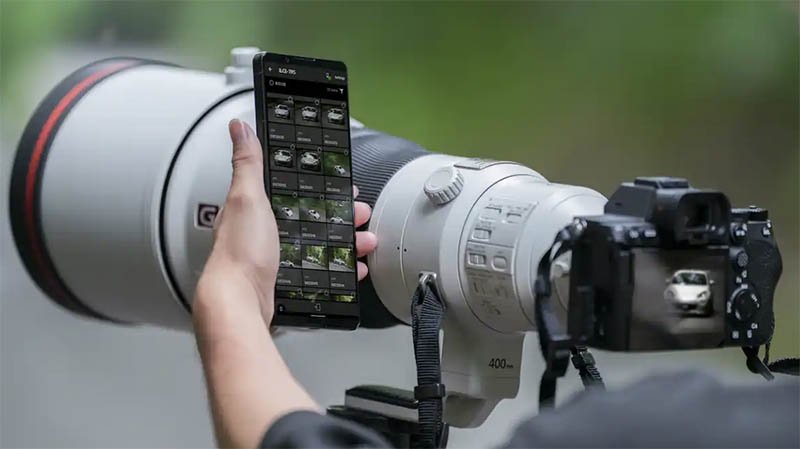
Pixel Shift Mode
Both cameras support a Pixel Shift Mode that allows you to capture multiple images that are later combined using Sony’s Imaging Edge desktop software to create a single image with an incredible amount of detail.
However due to the different sensor sizes in each camera and also the a7RV being the newer camera, how they each handle Pixel Shift is a little different.
Pixel shift mode on the Sony a1 gives you the choice of whether to shoot four frames or sixteen which can then be combined in post to create photos with up to 199 million pixels.

The a7RV also offers a choice of four or sixteen frames, but due to the larger sensor the end result is now a massive 240.8 million pixels.
Imaging Edge Desktop 3.5.00 or newer adds additional Pixel Shift support for the a7R V that can automatically detect and correct small movements in the 16 images, such as leaves in trees or people, this is not supported by the a1 at present.
Live Streaming
The a7R V gains easy streaming in 4K with a UVC/UAC compatible smartphone or PC via its USB connection, allowing the a7R V to be used as a high-resolution webcam.
The a1 can still be used for streaming but it requires the use of Sony Imaging Edge Webcam and this unfortunately limits the resolution to 1024 x 576 pixels.
Firmware Updates
Firmware updates have always been a nightmare for Sony owners, especially those who prefer to use Apple Macs due to all of the security hoops that need to be jumped through to install the software via USB.
Unfortunately this still remains true for Sony’s flagship a1, but the a7R V now allows you to update firmware via memory card which is a heck of a lot easier.
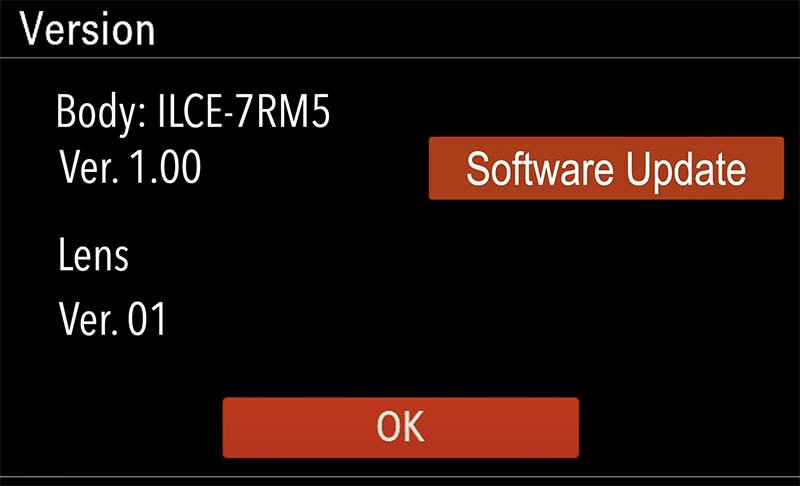
This was first introduced in the Sony a7IV and hopefully going forward this method will be used in all new camera releases.
Price
The a1 is Sony’s most expensive Alpha camera ever created, with a retail price in the US of $6,498.00, £6,499.00 in the UK or €7,299.00 in Europe for the body only. Since it launched I’ve not seen a discount on these prices.
The a7R V costs $3,898.00 in the US, £3,999.00 in the UK and €4,499 in Europe.
I don’t think you need me to do the math, this makes the a1 roughly $2600 more expensive than the a7RV.
You could almost purchase the excellent Sony FE 70-200mm f/2.8 GM OSS II lens for the difference in price!
Summary
Both the Sony a1 and the a7RV are incredible cameras packed full of the latest and greatest technology, well at least until they are superseded which doesn’t take very long these days!
With the a1 costing a whopping $2600 more than the a7RV, you are probably asking yourself if you really need that stacked sensor in the a1, as despite some small differences the key difference here is definitely the sensor and 30 frames per second.
If you shoot a lot of fast action sports or birds in flight, then the a1 is definitely going to net you a lot more keepers due to its much faster sensor and electronic shutter. You’ll be able to acquire focus faster and also shoot at up to 30 FPS in silence and without blackouts if you so desire.
But if you shoot a mixed bag of wildlife that doesn’t revolve around birds flapping their wings, then you’ll most likely be perfectly happy with the a7R V, as will still image and portrait shooters.
For video shooters the a1 still has the edge with its support of 4k/120p and minimal rolling shutter, although it is lacking some helpful video features found in the a7RV such as focus breathing, AF assist and focus map, as well as the ability to track animal and bird eyes when shooting movies.
The a1 and a7RV are currently two of Sony’s top of the range cameras, so ultimately whichever camera you decide to go for I don’t think you will be disappointed. Well, perhaps at least not until your partner finds out how much you have spent!
Please let me know your thoughts on this comparison down in the comments below, especially if you have already made up your mind on which one to go for.

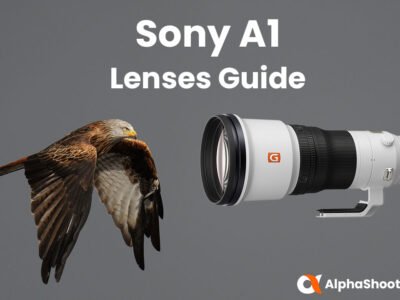
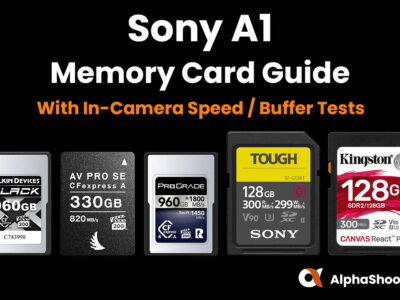
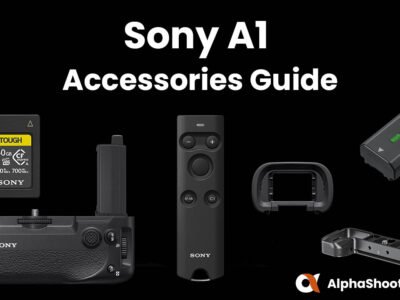
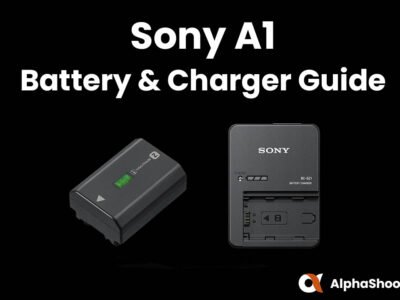
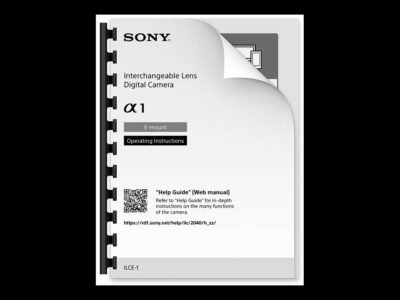
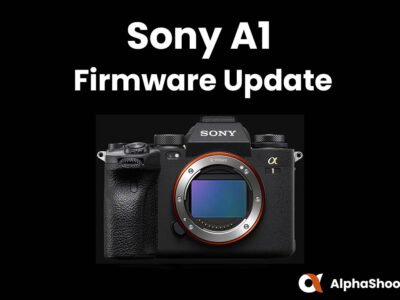

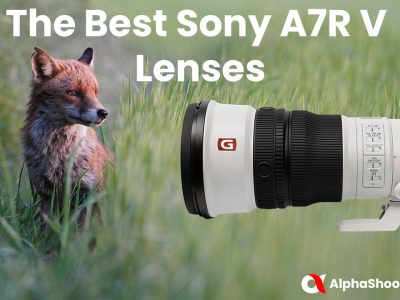
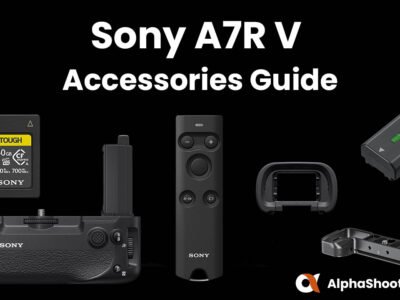
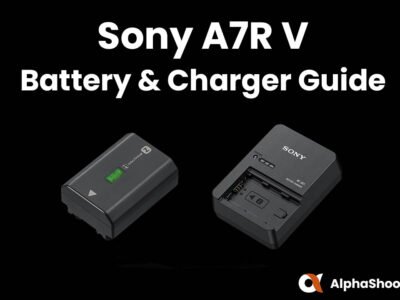
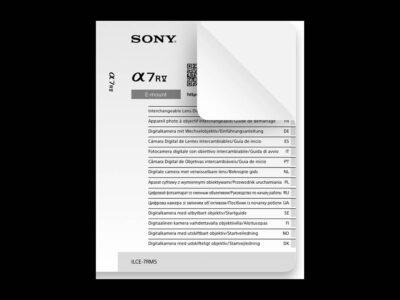


“The a7RV doesn’t have the dedicated drive/focus mode dials on the left hand side of the top panel like you’ll find on the a1.” It should be noted how they may be a benefit to many. That is, in A1, you can’t assign Drive Modes or Shooting speeds etc, to a custom mode dial, only in custom hold buttons. So not having a physical buttons allow for a lot more customization. The downside being you might need to use more of the custom buttons for changing these now unless using FN is enough.